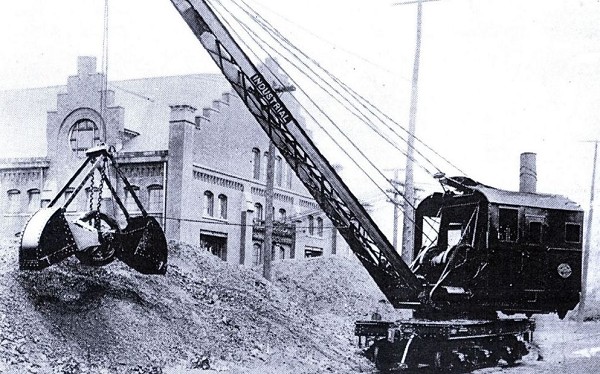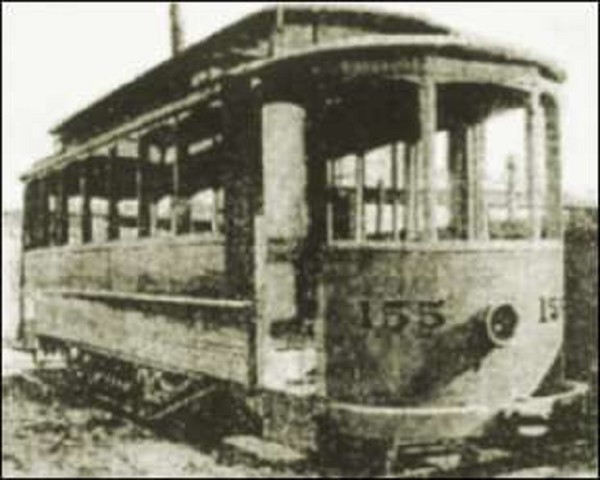MONARCH NO MORE: Historic Power Plant of Street Railway Recalled
Streetcar Lines Were Driven From Iconic Building Abandoned Century Ago
May 5, 2013
By: Dave Rogers
 I-B crane works in front of Monarch Building, the power plant for Bay City's Consolidated Street Railway.
I-B crane works in front of Monarch Building, the power plant for Bay City's Consolidated Street Railway.
 No. 155 to be junked this week by Hirschfield Sons Co., which purchased all the equipment of the defunct Saginaw-Bay City Railway Co. some time ago. When this process is completed Bay City will truly be without street cars. (Tribune, Oct. 26, 1924)
No. 155 to be junked this week by Hirschfield Sons Co., which purchased all the equipment of the defunct Saginaw-Bay City Railway Co. some time ago. When this process is completed Bay City will truly be without street cars. (Tribune, Oct. 26, 1924)
The Consolidated Street Railway Company has lines to all parts of Bay City, West Bay City and Essexville, and its cars and service are the best that can be given anywhere.
One of the last vestiges of the Victorian age in Bay City recently was demolished.
The Monarch Building, an intriguing red stone structure on the riverfront, was removed to make way for the new Dow Corning Center, anchor of the RiversEdge development.
No one is alive to recall the heyday of the Consolidated Street Railway Company that was driven by power from the massive Monarch power plant.
The City of Bay City has posted on its development website photos of the Monarch Building with huge Industrial Brownhoist railroad cranes in front. Those cranes were among the largest ever built and were fabricated at the nearby Industrial BrownHoist Company of William Clements.
The Albert Kahn designed I-B office building, erected in 1927, survives and now is occupied by the Bay-Arenac Behavioral Health Authority.
The Monarch Building was constructed in 1893 and operated only for a decade. It powered streetcars throughout the city hooked to overhead lines.
Noted local architects Pratt & Koeppe designed the $84,000 structure the Bay City Tribune described as "equipped with modern electrical machinery."
The building was 65 by 96 feet outside the pilasters. "Adjoining the boiler room is a low roofed addition for coal," the newspaper explained. The exterior is of No. 1 hydraulic pressed brick while the interior in both engine and boiler rooms was cream enamel brick.
The engine room measured 48 by 60 feet and was equipped with two tandem-compound condensing engines built by the Russell Manufacturing company and were directly connected to a Siemens & Halske generator of 550 kilowatt capacity.
The transit history of Bay City began just after the Civil War, in 1865, with the Bay City Railroad Co. The progression of public transportation systems is listed:
1865-1893 - Bay City Railroad Co.
1893-1903 - Bay Cities Consolidated Railway Co.
1903-1910 - Bay City Traction & Electric Co.
1910-1919 - Saginaw Bay - Bay City Railway Co. (Commonwealth Power Railway & Light Co.)
1919-1924 - Michigan Railroad Co. (Commonwealth)
1924-1928 - Michigan Railroad Co. (Electric Railway Securities Co.)
1928 - streetcars discontinued
1921-1958 - Balcer Brothers Motor Coach Co.
1958-1974 - Hibbler's Bay City Community Service
Abandoned for more than a century, the Monarch Building excited hope among some optimists that it could have been converted to a restaurant or some other use to attract tourists. Alas, that was not to be, and the memory of its existence will fade like other iconic sights of the city that have made way for progress.
###